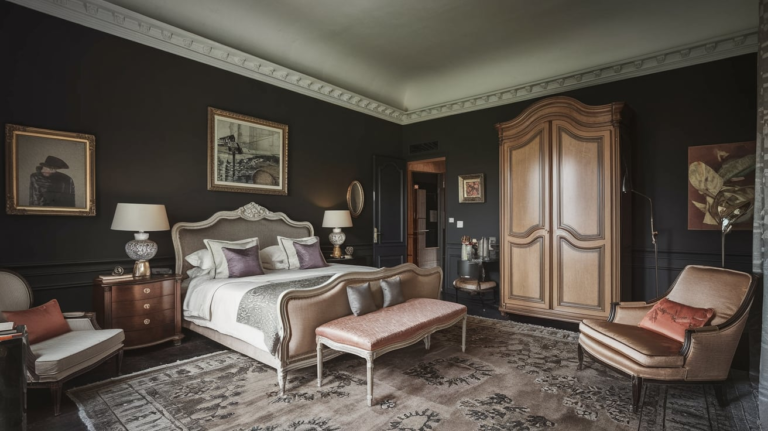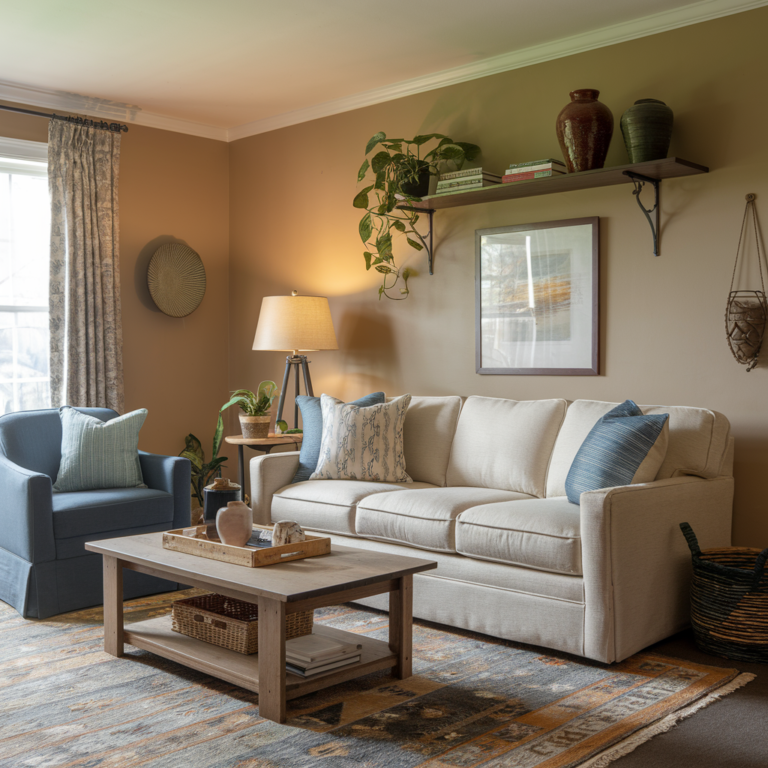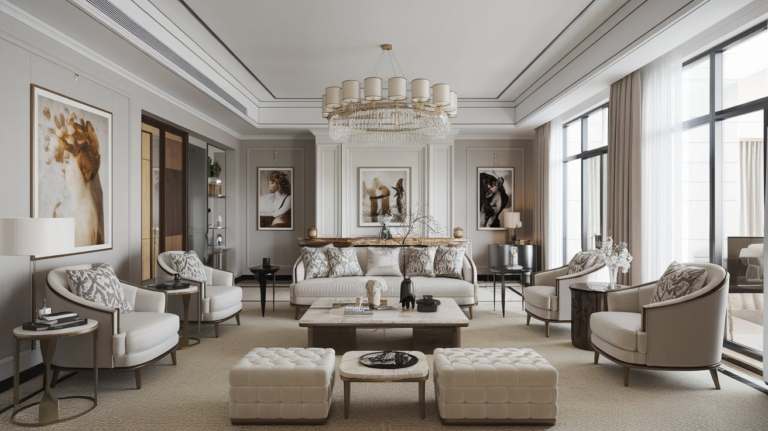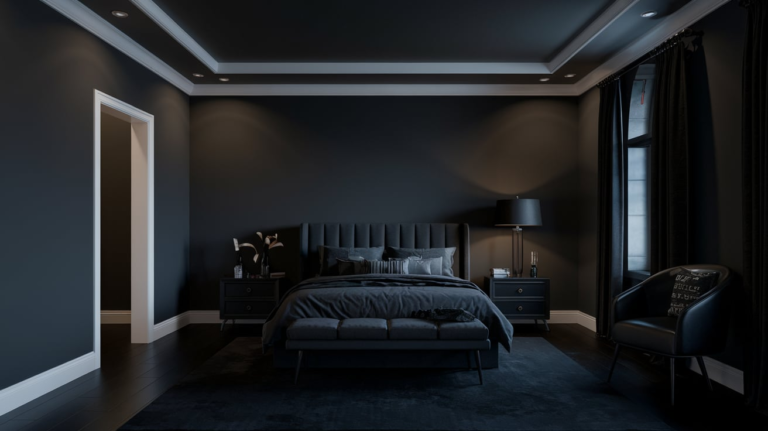26 Living Room Dining Room Combo Ideas
Creating the perfect living room and dining room combination can seem like a tricky balancing act. After all, these two spaces need to serve different functions: the living room for relaxation and socializing, and the dining room for eating and entertaining. But with a little creativity and planning, you can transform these two areas into one harmonious space. Think of it as creating a recipe for a dish that’s both delicious and visually appealing, where every ingredient plays a role in complementing the others. So, if you’re ready to explore how to merge style and function, here are 26 Living Room Dining Room Combo Ideas that will help you get it just right.
1. Embrace Open-Concept Design
Open-concept spaces have become the hallmark of modern living, and for good reason. By knocking down walls or simply creating a seamless flow between the living room and dining room, you can create a larger, more open space. This design choice encourages conversation, increases natural light, and makes your home feel bigger than it actually is. If you have a smaller space, an open-concept design can also make the area feel less cramped. Try using furniture placement and rugs to define each space, rather than physical barriers.
2. Use a Bold Area Rug to Anchor the Space
An area rug is not just for warmth; it’s a fantastic way to define different zones in an open-concept room. A large rug can anchor the living room area, while a smaller one under the dining table can do the same. Choose complementary colors and patterns to ensure the rugs tie the two spaces together, creating harmony without creating clutter. Think of the rug as a visual bridge connecting the two spaces.
3. Incorporate Dual-Purpose Furniture
In small spaces, dual-purpose furniture is a lifesaver. A dining table that doubles as a workspace or a storage bench that can be used for both seating and stashing away extra linens will maximize your space. A sofa with built-in storage or a coffee table that can transform into a dining surface allows you to keep your combo space functional and stylish. These pieces of furniture can easily transform based on your needs.
4. Try an L-Shaped Layout
An L-shaped layout for the living room and dining room combo is a classic choice. This layout helps create a natural division between the two areas while still maintaining an open feel. It works especially well in smaller spaces and is incredibly versatile. With one side dedicated to the living room and the other to dining, you get a good flow between the spaces without it feeling too segmented. Position your furniture along the walls or near the corners, leaving enough space for movement.
5. Play with Colors to Separate Spaces
One of the most effective ways to visually separate the living and dining areas is by using colors. You don’t have to use different wall colors (though that’s an option) but playing with different tones or textures on furniture and decor can subtly define the two areas. For example, you might choose a neutral color palette for the living room but opt for a rich, darker shade for the dining area. It’s like creating two outfits that complement each other—think of it as your interior design wardrobe.
6. Create a Focal Point in Each Area
Focal points are essential in any room design. In a living room and dining room combo, create distinct focal points for each area. For the living room, this might be a fireplace or a large piece of art. For the dining room, the focal point could be a stunning chandelier or a statement dining table. These focal points draw the eye, creating natural separation between the two spaces.
7. Incorporate Sliding or Bi-Fold Doors
If you love the idea of an open-concept space but need the ability to close things off from time to time, sliding or bi-fold doors are the perfect solution. These doors can be opened up when you want an open, spacious feel or closed to create more privacy during dinner parties or family gatherings. It’s the best of both worlds, offering flexibility in your home design. Imagine hosting a cozy movie night in the living room, only to slide open the doors to a more formal dining area for dinner.
8. Go for Minimalist Furniture
When designing a living room-dining room combo, less is often more. Avoid clutter by selecting minimalist furniture that serves multiple functions. A sleek dining table with thin, clean lines paired with a comfortable sofa can make the space feel more open and airy. The key is to choose pieces that are elegant yet unobtrusive, allowing the flow of the room to take center stage.
9. Make the Most of Vertical Space
In a combo space, floor space can be limited. To make the most of it, look up! Use vertical space to your advantage by installing shelves, cabinets, or hanging light fixtures. Vertical storage, like a tall bookshelf or wall-mounted lighting, keeps the floors clear and creates a sense of height in the room. It’s a smart solution, especially when working with limited square footage.
10. Mix Different Styles
Who says you can’t mix styles? A living room and dining room combo gives you the perfect opportunity to create an eclectic, layered space. Try mixing contemporary and vintage pieces, or industrial and bohemian designs. You don’t have to match every piece of furniture, but rather, ensure that they all share a common element—whether that’s color, texture, or material. Think of it as crafting a playlist of your favorite styles, all blending together in harmony.
11. Use a Bar Cart to Define the Dining Area
If your space lacks a clear separation between the living and dining areas, consider adding a stylish bar cart to the dining side. Not only does this piece provide extra storage for beverages and glassware, but it can also act as a divider between the two areas. It’s like a functional piece of art that pulls double duty!
12. Install Pendant Lights Over the Dining Table
Pendant lights are a simple yet striking way to add some flair to your dining space. By hanging a series of pendant lights over your dining table, you instantly create a focal point. These lights also help define the dining area, especially in open-concept layouts. Whether you go for a single, large pendant light or a series of smaller fixtures, they add a touch of sophistication and personality.
13. Opt for a Large Statement Sofa
A large statement sofa can serve as the anchor of the living room, helping to define the space within your combo area. Look for one with bold lines or unique features—like an oversized sectional or a vintage-inspired chesterfield. It’ll make a statement and naturally direct attention to the living area. Choose materials that complement the dining room décor for a unified look.
14. Utilize Multi-Functional Furniture
Furniture that can serve multiple purposes is a game-changer in a combo space. A sofa that converts into a bed for guests, a dining table with expandable leaves, or a coffee table that doubles as a desk can all be incredibly useful. These pieces allow you to maximize your space and make the most of every square foot.
15. Incorporate Natural Elements
Bring nature into your combo space by incorporating natural elements like plants, wood, or stone. A wooden dining table paired with a plush sofa or plants that stretch toward the ceiling can bring balance to the room. Natural materials make a space feel grounded and warm, and they help merge the living and dining areas in a harmonious way.
16. Use a Large Mirror to Open Up the Space
Mirrors are one of the best tricks in the design world for making a space feel larger and more inviting. A large mirror hung on one wall not only reflects light but also gives the illusion of more space. Try placing a mirror behind the dining area or above the living room sofa to enhance the sense of openness in your combo room.
17. Create a Seamless Flow with Flooring
The flooring you choose can significantly impact how seamlessly the two areas flow together. Consider using the same flooring throughout both spaces to create continuity. Hardwood floors, neutral tiles, or even a continuous carpet can help make the living room and dining area feel like one unified zone. If you’re using different flooring types, make sure to transition smoothly with a stylish rug or a change in texture.
18. Incorporate a Built-In Buffet or Sideboard
A built-in buffet or sideboard is a great way to bring additional storage and functionality to your dining area. This can help to keep the dining space organized while also serving as a subtle divider between the two areas. It’s an excellent way to display your favorite décor or provide storage for dishes and linens. Plus, it adds an extra layer of sophistication to the space.
19. Go for Monochromatic Decor
For a cohesive look, consider using a monochromatic color scheme throughout your living room and dining room. Stick to one color palette with varying shades, from deep to light tones. This approach helps create a visually harmonious space where the two areas blend seamlessly. Whether it’s a soft gray, a bold navy, or a warm beige, a monochromatic palette can make the room feel well-designed and pulled together.
20. Add a Breakfast Bar for Casual Dining
If you love to entertain but don’t have room for a formal dining area, consider adding a breakfast bar or counter-height dining table. This piece allows you to create a more casual dining experience without sacrificing space. Plus, it doubles as a place to hang out, work, or sip on your morning coffee, creating a relaxed vibe in your combo space.
21. Play with Textures
Mixing and matching different textures can add a lot of depth and interest to your combo space. A velvet couch paired with a linen dining chair, or a leather ottoman with a shaggy rug, creates contrast that keeps the space from feeling too flat. Think of texture as a way to tell a story with your space—whether it’s soft, plush, or rugged, textures can create the right ambiance for both the living and dining areas.
22. Incorporate Bold Art Pieces
A large piece of art can instantly elevate a space and become the focal point of your combo area. Choose art that complements both the living and dining areas in terms of color, style, and vibe. Whether it’s a modern abstract painting or a vintage landscape, bold art pieces can help create a sophisticated, curated feel in your home.
23. Consider a Drop-Leaf Table
If you’re working with a smaller dining area within your combo space, a drop-leaf table is a fantastic solution. It allows you to expand the table when needed and fold it down when you want to create more space. It’s practical and functional, offering you flexibility when entertaining or simply enjoying a meal at home.
24. Embrace Statement Lighting in the Living Area
Don’t let the dining area have all the fun when it comes to lighting. A statement light fixture in the living room, like a bold chandelier or a sleek pendant light, can help define the space and create a cozy, inviting atmosphere. Play with different light sources to create depth, including floor lamps, table lamps, and sconces. Lighting is the secret ingredient that can make or break a room.
25. Create a Curated Display Shelf
A curated display shelf can serve as a beautiful divider between the living and dining areas. Use this space to showcase personal items like books, art pieces, or plants. It creates an opportunity to inject personality into the space while also serving as a practical storage solution.
26. Add Some Playful Patterns
Patterns can energize a space, but they need to be used carefully. Incorporating playful patterns, whether on throw pillows, curtains, or even the dining chairs, can add a fun, personal touch to your combo room. Use patterns that tie in with your color palette to ensure everything feels cohesive and not too busy.
Creating a living room and dining room combo space is an opportunity to show off your creativity while maintaining function. Whether you go bold with statement pieces or prefer a more minimalist approach, these ideas should inspire you to craft a space that truly feels like home.




